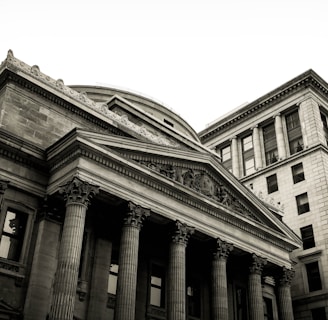Central Bank Interest Rates: A powerful tool of an Economy.


Introduction
If you’ve ever wondered why a single speech from the Federal Reserve chair or a small change in interest rates can send global markets into a frenzy, you’re not alone. Interest rates, set by central banks, are one of the most powerful tools in economics, and they play a huge role in shaping price movements across all financial markets.
In this blog, we’ll explain interest rates, how central banks use them, how they affect financial markets, and how traders can profit from understanding these moves.
What Are Central Bank Interest Rates?
Central banks, like the US Federal Reserve, the European Central Bank (ECB), and others, set a key interest rate that affects borrowing costs across the economy.
For example:
The Federal Funds Rate in the US
The Refinancing Rate in the EU
The Repo Rate in India
This is the rate at which commercial banks borrow money from the central bank or from each other. When the central bank raises this rate, borrowing becomes more expensive. When it lowers the rate, borrowing becomes cheaper.
Why Do Central Banks Change Interest Rates?
Central banks adjust rates based on their monetary policy goals, mainly:
Controlling inflation
Supporting economic growth
Stabilizing currency
Managing unemployment
For example:
If inflation is too high, the central bank might raise interest rates to slow down spending.
If the economy is weak, it might cut rates to encourage borrowing and investment.
How Interest Rate Decisions Affect Financial Markets
1. Stock Markets
Rate Hike (increase): Negative for stocks, especially growth stocks like tech, as borrowing becomes costly and consumer spending may slow.
Rate Cut (decrease): Positive for stocks, as it stimulates economic growth and makes borrowing easier for companies and consumers.
2. Forex (Currency Markets)
Higher interest rates usually strengthen a currency.
Lower interest rates weaken a currency.
Why? Investors seek currencies with higher yields.
3. Bonds
When rates go up, bond prices go down.
When rates go down, bond prices go up.
4. Commodities
Gold tends to fall when interest rates rise, as it doesn’t pay interest.
Oil may rise or fall depending on how interest rates affect demand.
How Traders Can Profit from Interest Rate Changes
1. Trade the Expectation vs Reality
Markets often price in expectations before the actual interest rate decision.
If the actual decision is different, it creates volatility.
For example, if the market expects a 0.25% rate hike, but the Fed raises by 0.50%, markets can swing sharply.
Strategy: Trade breakouts or reversals based on surprise announcements.
2. Currency Pair Strategies
Central banks’ decisions directly impact currency pairs.
Example: If the Federal Reserve raises rates while the ECB holds steady, the USD/EUR might go up (stronger dollar).
Strategy: Trade forex pairs around rate decision dates using pending orders or breakout strategies.
3. Follow the Dot Plot & Forward Guidance
In the US, the Fed provides a “dot plot” showing where officials think rates will go.
Also watch for speeches, press conferences, and minutes for hidden clues.
Strategy: Trade based on forward guidance, not just current rate decisions.
4. Sector Rotation in Stocks
Rate hikes often hurt tech and real estate.
Rate cuts help banks (loan growth) and consumer discretionary stocks.
Strategy: Rotate your trades into sectors likely to benefit.
5. Use Economic Calendars
Plan trades around known interest rate announcement dates — usually once a month.
Real-World Example
In March 2023, the Fed raised rates by 0.25% as expected, but the press conference signaled a possible pause due to banking sector issues.
Stocks initially fell, then reversed and rallied.
The USD weakened sharply.
Gold surged as rate hike expectations dropped.
A trader watching the tone and market reaction could have made profits in multiple assets.
Conclusion
Interest rates are more than just a headline — they are core drivers of market behavior. By understanding how they work, how central banks think, and how different assets respond, you can add a powerful tool to your trading strategy.
Stay ahead of the curve, trade smartly, and always plan around interest rate events for the best edge!


